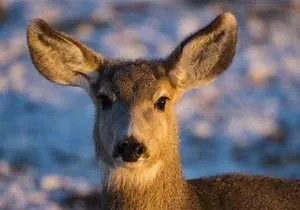Landowners reported seeing some early broods of bobwhite quail chicks in western Oklahoma during the first week of May, according to biologists with the Oklahoma Department of Wildlife Conservation. But recent consecutive days of stormy weather, hail and flash flooding across parts of southern Oklahoma could prove to be a setback for early-season quail reproduction.
“The flooding and hail might have been harmful in isolated areas,” said Scott Cox,
senior upland game biologist for the Wildlife Department. Bobwhite chicks are most vulnerable to environmental factors during the first seven to 10 days after they hatch.
This year’s earliest brood reports came from the Erick and Sayre areas. So it’s a good bet that bobwhite hens are sitting on their nests across most of southern Oklahoma.
Cox said researchers investigating quail at the Beaver River Wildlife Management Area had yet to observe any bobwhite hens on nests as of Monday, but they had seen a few blue quail already nesting. He said blue quail tend to nest earlier than bobwhites.
The recent storms, flooding and the cooler air that followed might have posed some survival problems for early broods of bobwhites. Newly hatched chicks can be stricken with pneumonia when faced with cold, wet conditions.
“The good thing is that this is early in the nesting season, and they have plenty of time to re-nest and produce broods later in the spring or summer,” Cox said. He said if a brood is lost early in the season, bobwhites are very likely to try nesting a second and perhaps a third time during the season.
Quail populations have shown gains in the past two nesting seasons in much of the state, after the number of birds dwindled during the previous decade.
“We’re keeping our fingers crossed that the weather will hold out, and we’ll have a good reproduction year again,” Cox said. “If we get another nesting year compared to last year and the second half of 2013, then numbers should be up again, barring any catastrophic events.”
Cox said the habitat is lush in many areas this spring, including some areas of western Oklahoma that have been reeling from drought conditions since 2011. “The habitat is ripe for good nesting,” he said. “It’s a good sign seeing birds on the nest this time of year.
Source: Oklahoma Department of Wildlife Conservation




